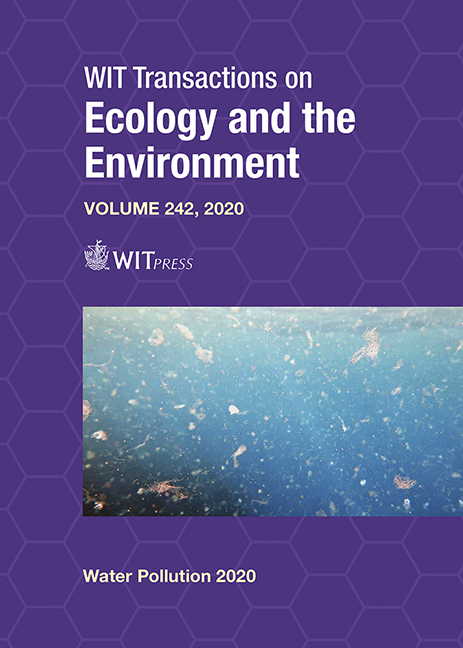EFFECT OF LANDSCAPE METRICS ON WATER QUALITY OVER THREE DECADES: A CASE STUDY OF THE AVE RIVER BASIN, PORTUGAL
Price
Free (open access)
Transaction
Volume
242
Pages
11
Page Range
39 - 49
Published
2020
Paper DOI
10.2495/WP200041
Copyright
WIT Press
Author(s)
ANTÓNIO CARLOS PINHEIRO FERNANDES, LISA MARIA DE OLIVEIRA MARTINS, LUÍS FILIPE SANCHES FERNANDES, FERNANDO ANTÓNIO LEAL PACHECO
Abstract
Due to intense industrial and urban activity Ave River Basin, Portugal was once tagged as one of the most polluted in Europe. Besides point source pressures are the most evident threat to water quality in this river basin, in the present study, the effect of landscape on water quality was analysed. From a hydrological database, the concentration surface water parameters was extracted, comprehended between 1988 and 2016. The average concentrations in each sampling site for each hydrological year was calculated. The averages were correlated to 15 landscape metrics by using the Spearman's rank correlation coefficient, over the analysed hydrological years. For each landscape metric, the percentage of correlations with surface water parameters for each hydrological year that had statistical significance (p≤0.05) was counted, and the same analysis was made for each surface water parameter. The area occupied by artificial surfaces increased the contaminant concentrations in 65.3% of the correlations while the edge density increased by 62%. For forested areas, the edge density and occupied area had, respectively, 56.0% and 66.0%, of correlations that decreased contaminant concentrations. Conductivity was the parameter that has most linked to landscape metrics since, 52% increased the concentration, 21% decreased, while the remaining 27% did not have statistical significance. Oxygen demands, total suspended solids, different nitrates forms, total orthophosphate and coliforms were acceptably correlated, with percentages ranging from 20% to 44%. Only heavy metals were poorly correlated, since the percentage of correlations that varied the concentrations was lower than 8%. This study allowed us to understand that in an urbanised river basin, where point source pressures are the dominant pollution source, landscape metrics also have an effect on water quality and can become a threat to hydric resources.
Keywords
Spearman’s rank correlation coefficient, water quality, ArcGIS, Ave River Basin, landscape metrics





